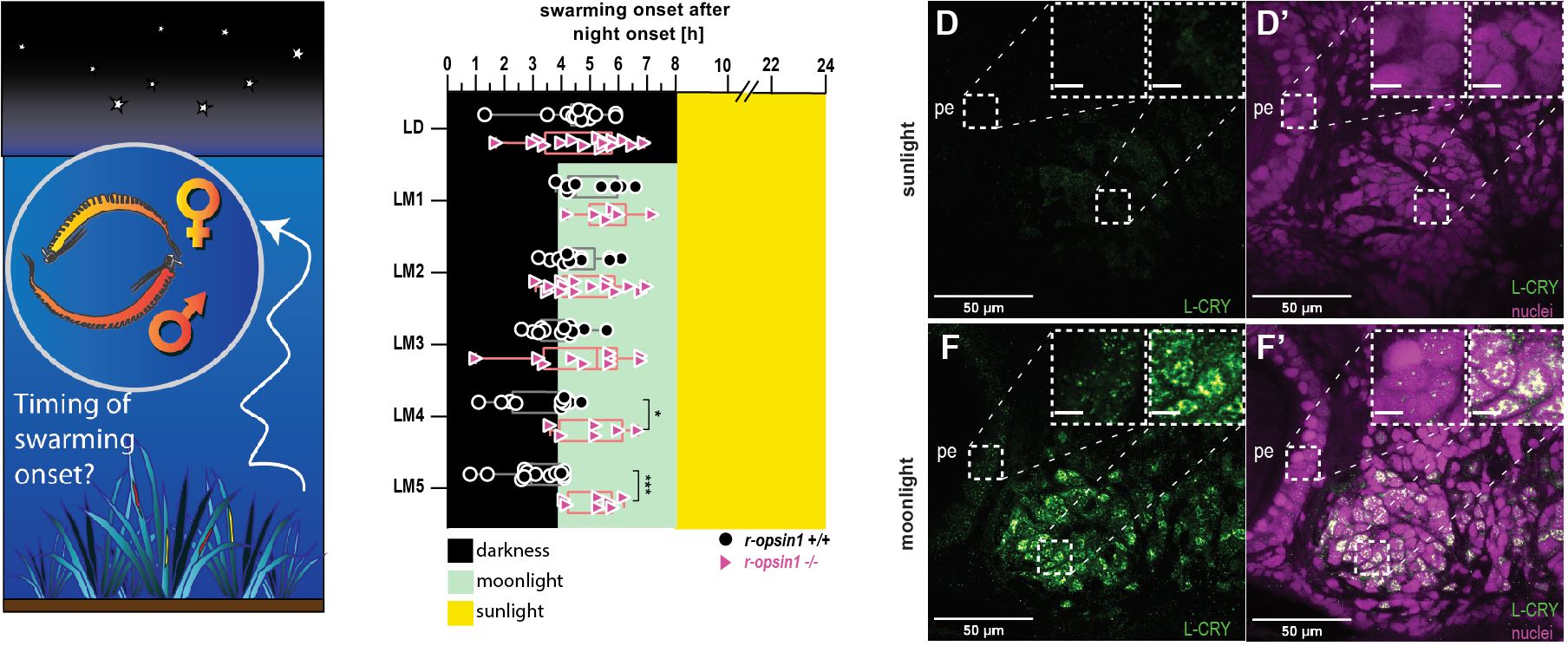Clock entrainment by sun- and moonlight in Platynereis dumerilii
Animals possess endogenous clocks to anticipate cyclic environmental changes. Ambient light is one of the most important cues to synchronize internal timing systems with these environmental cycles. While moonlight is well known to entrain monthly calendars (circalunar clocks) in some marine species, sunlight is the main entrainment cue in most species for the daily (circadian) clock. However, there is growing evidence that moonlight also affects daily timing in various species, ranging from invertebrates to humans. How moonlight affects the circadian clock, and how the circadian clock actually discriminates between moonlight and sunlight, remains largely elusive.
In my thesis, I used the marine bristle worm Platynereis dumerilii as a powerful experimental model system to assess how moonlight affects circadian timing (manuscript 1). By establishing a novel behavioral paradigm, I showed that circadian timing of the worms’ reproductive behavior (swarming) is governed by a moonlight-sensitive plastic circadian clock that times swarming onset to the respective portion of the night where no moonlight is present.
I then used this experimental paradigm to work out key genetic factors involved in this process. By testing Platynereis mutant lines that are deficient in candidate photoreceptors, we identified two photoreceptors, L-Cry and r-Opsin1, that are required to correctly adjust the circadian clock to nocturnal moonlight. While r-opsin1 is genetically required to adjust circadian timing of swarming onset to moon phase, L-Cry seems to be required to correctly discriminate moonlight from sunlight. We extended this finding to the fruit fly model Drosophila, were we showed that the respective L-Cry ortholog is also required to correctly interpret ambient moonlight, preventing a disturbance of the circadian clock by moonlight. Together with a companion study (manuscript 2) that investigated the function of L-Cry in the context of the worms' monthly circalunar clock, these findings provide first molecular insights into the decoding of moonlight versus sunlight for circadian and circalunar timing.

